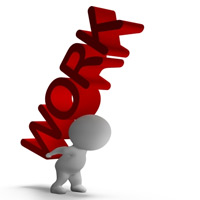
The Alexander Technique is best known for improving posture.
But here’s what we commonly hear about about how to improve posture: “Stand up straight!” and “Sit up straight!” “Suck your stomach in, push your chest out, put your shoulders back, stick your chin back!”
Sucking, pushing, putting, and sticking, is hard work.
Why isn’t this the best way to improve your posture?
Because it’s just a posture,
so it can’t be maintained.
Improve Posture with the Alexander Technique
Notice your breathing, and let it be full, and slow.
Let go of the muscles in the back of your neck.
Let your head slowly tip forward a while the crown of your head, and your entire torso, moves up.
Breathe fully. Smile.
Opposition-Up and down
The sit bones are ‘U’ shaped bones at the bottom of your torso.
Let your sit bones release down into the chair.
Your neck frees and your head and torso move up.
You are improving your posture without effort, without trying, without straining.
Mark Josefsberg-Alexander Technique NYC











Nice post Mark. I do disagree with your statement “Most people already know how to improve posture” – I think it would be more accurate to say they THINK they know how to improve posture, or they know how to change (but probably not improve)their posture or, as Marj Barstow used to say, they know how to “re-arrange their tensions”.
One major problem is that most people think of “posture” as a noun – as in position. Too bad, since as long as you’re alive it’s a verb – as in movement.
Hi Robert,
I also disagree with my statement that most people know how to improve posture! Sitting or standing bolt upright will make you look like you’re not slumping. But since you are merely posing, you’re not going to be able to maintain that position for long. And, as Alexander Technique teachers, we know it’s not about maintaining positions, or postures. It’s quite the opposite. The Alexander Technique has more to do with freedom, and choice, and ease of movement. The word ‘posture’ is a good jumping off point because that’s a word people use a lot, at least in 2012. I wonder if any Alexander Teacher ever had a brand new student say “I’d like to improve my use.” Use, rhyming with loose, is a word Alexander Technique teachers utilize instead of the rigid sounding posture word; once the student starts on the path. I’ve written a lot about how posture has rigid, fixed connotations. One short article,
https://markjosefsberg.com/posture/how-not-to-improve-your-posture
comes to mind.
Thanks so much for commenting!
But Robert, upon rereading my post, I changed it! Ah…flexibility, non-rigidity, freedom to change.The Alexander Technique works!
I like to think of “poise” as opposed to “posture, because poise has an air of lightness, choice and freedom, whereas “posture” always has the connotations of rigidity and being fixed in a static position. However, I agree with Mark that “posture” is something to which most people can relate. I changed my posture hugely with the Alexander Technique and swapped “poise” over “posture”. Encouraging a pupil to perhaps not think about their posture so much as about their height and width, sitting bones and feet might be more beneficial, but “posture” is indeed always a good jumping off point, particularly when writing a blog, which does not include the hands, except to type.
I’m totally with you on the poise vs. posture thing, Stella. Once we get into our Alexander Technique lessons, my students start dropping the posture word, and substitute other words. For beginners though, or people who have never heard of the Alexander Technique, posture is a word they know. I actually enjoy writing for the ‘general public’, rather than exclusively for Alexander Teachers. There are plenty of people, who have vast amount of knowledge and writing skills, already doing that kind of writing. I like to try and keep it simple. We all have our styles, right?
Sometimes using the only word we know is enough. I initially came to the Technique because I had appalling posture from early childhood; my introduction to it was via a book by Noel Kingsley who mentions posture again and again in his book, interviews and writing for the very reason that it might just mean something to his audience. I’m fully in agreement with you Mark too, and keeping it simple is actually the only way I have discovered I can learn.
Hi Mark
You might be interested to know about ‘Change your Posture – Change your Life’
see https://www.alexander.ie/prod_detail/posture.html
Best wishes
Rick
I just heard about this today! My Alexander Technique students will also find out about it today, and I’m looking forward to reading it!
Thanks, Rick
Yes Stella, totally agree with what you’re saying. Aren’t words supposed to be about…communication? Sometimes jargon can get in the way of the message, and the message of the Alexander Technique is extremely strong, and much needed. People are suffering needlessly because they’ve never even heard of the Alexander Technique. It’s really a shame. As an Alexander Technique teacher I feel an obligation to not keep this technique to myself, or only discuss it with other Alexander teachers. I believe it’s the right thing to do. There are hundreds of thousands of back and neck operations a year. How many of those could have been avoided? People not familiar with the AT know the word ‘posture’, and don’t know the word ‘use’- Until their first Alexander Technique lesson of course!
Great post, Mark. Completely agree with you on this (and have written my own blog posts on the subject!). For some reason I’m very drawn to your description of the sit bones as “U” shaped bones – I’d not quite thought of them that way, and it seems immediately helpful.
Hi Imogen,
I’ve read and enjoyed your blog posts on the same subject! Glad you like the ‘U’ shaped bones thought, and even gladder you find it immediately helpful. I can’t remember who described them that way to me.